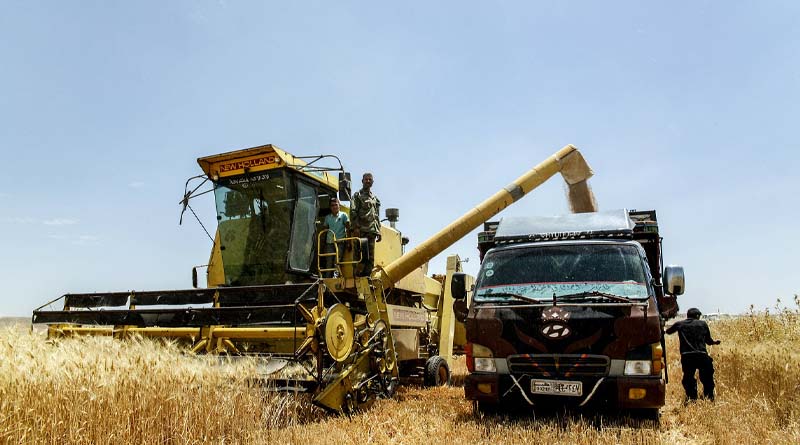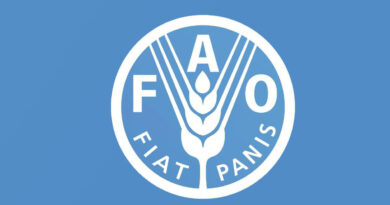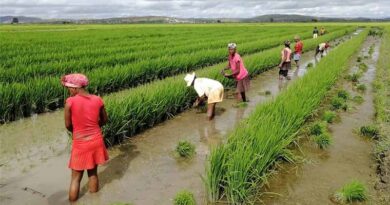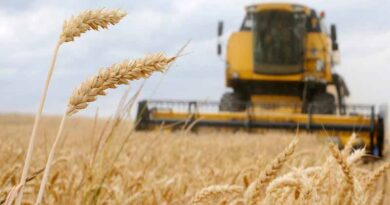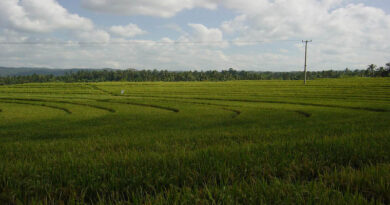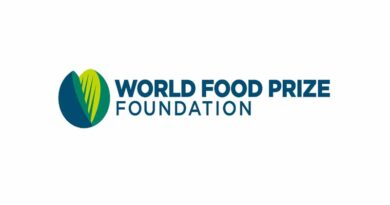FAO Food Price Index continued declining in June
07 July 2023, Rome: The benchmark index of international food commodity prices declined again in June, led by price decreases for all major cereals and most types of vegetable oils, the Food and Agriculture Organization of the United Nations (FAO) reported today.
The FAO Food Price Index, which tracks monthly changes in the international prices of commonly-traded food commodities, averaged 122.3 points in June, down 1.4 percent from May and 23.4 percent from its peak in March 2022.
The FAO Cereal Price Index declined 2.1 percent from May. International coarse grain quotations in June decreased by 3.4 percent, driven mostly by increased maize supplies from ongoing harvests in Argentina and Brazil and improved output prospects in key producing areas of the United States of America. International wheat prices dropped by 1.3 percent, as harvests began in the Northern Hemisphere, influenced by ample supplies and a lower export tax in the Russian Federation, along with improved conditions in the U.S. International rice prices declined by 1.2 percent amid subdued demand for non-Indica varieties and efforts by Pakistan to attract export sales.
The FAO Vegetable Oil Price Index declined by 2.4 percent from May, as lower world prices of palm and sunflower oils more than offset increases in quotations for soy and rapeseed oil, influenced by weather conditions in major growing regions.
The FAO Dairy Price Index declined by 0.8 percent in June, led by lower international cheese prices, even as world butter prices rose, driven by active demand for spot supplies, mainly from the Middle East.
The FAO Sugar Price Index declined by 3.2 percent, its first drop after four consecutive monthly increases, mainly triggered by good progress of the sugarcane harvest in Brazil and sluggish global import demand, particularly from China.
The FAO Meat Price Index was virtually unchanged in June, with poultry meat prices rising on the back of high import demand from East Asia amid ongoing supply challenges linked to the widespread avian influenza outbreaks. International pig meat prices also rose, while those of bovine and ovine meats dipped due to increased exportable availabilities from Oceania.
More details are available here.
Cereal production projected to reach record high
World cereal production is predicted to hit a record high in 2023/24, according to the latest Cereal Supply and Demand Brief, also released today.
FAO raised its 2023 global cereal production forecast to 2 819 million tonnes, indicating a 1.1 percent increase from the previous year.
The higher forecast almost entirely reflects better prospects for global wheat production, now pegged at 783.3 million tonnes, buoyed by improved outlooks in several countries, including Canada, Kazakhstan and Türkiye. However, global wheat production is still seen falling below last season’s output by 2.3 percent,
Global coarse grain output for the year is now forecast to grow by 2.9 percent from 2022 to 1 512 million tonnes. Likewise, world rice production in 2023/24 is expected to rise by 1.2 percent above the 2022/23 reduced level, to 523.7 million tonnes.
World cereal utilization in the season ahead is expected to expand by 0.9 percent to 2 805 million tonnes, led by expected increased use of coarse grains, especially of maize for animal feed.
FAO raised its forecast for world cereal stocks by the close of 2023/24 seasons to 878 million tonnes, some 2.3 percent higher from the previous season. At this level, the global cereal stocks-to-use ratio would remain unchanged at 30.6 percent, “indicating comfortable supply prospects in the new season.”
FAO’s latest forecast for world trade in cereals in 2023/24 points to a likely 0.9-percent contraction from 2022/23, with volumes of wheat seen declining from record levels.
More details available here.
High food prices worsen food situation in vulnerable countries
High food prices, economic downturns, conflict, droughts and the impending risk of El Niño weather patterns in several regions are aggravating food security concerns in many parts of the world. A total of 45 countries around the world are assessed to need external assistance for food, according to the latest Crop Prospects and Food Situation report, a quarterly publication by FAO’s Global Information and Early Warning System (GIEWS), also published today.
High domestic food prices, a measure divergent from the FAO Food Price Index, are a driver of worrying levels of hunger in most of the 45 countries, 33 of which are located in Africa, 9 in Asia, and also Haiti, Ukraine and Venezuela.
While world cereal production is forecast to expand by 1.1 percent in 2023 from the year before, it is predicted to contract in the group of 44 Low Income Food Deficit Countries (LIFDCs), pushing up import needs, the report said.
The quarterly report offers detailed information about food insecurity and price trends people face on the ground in the affected countries. It also provides a detailed assessment of regional production and trade prospects around the world.
Also Read: Syngenta India to train and certify 1000 spray men
(For Latest Agriculture News & Updates, follow Krishak Jagat on Google News)

